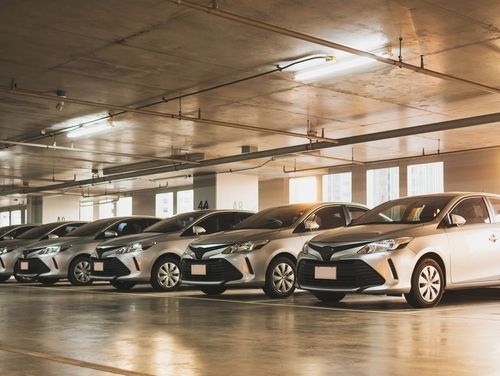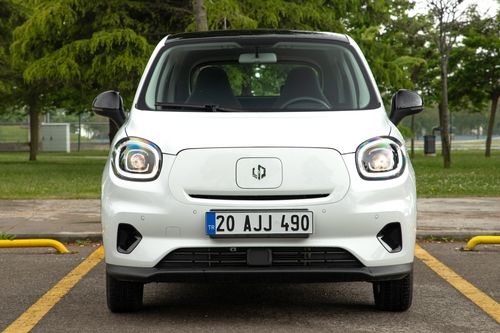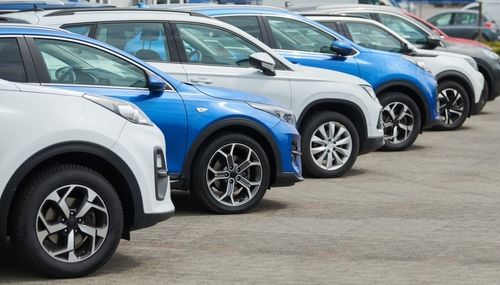Top 10 Factors That Affect Your Motor Insurance Premium
Written by Upstox Desk
Published on May 27, 2025 | 6 min read

After dinner, Surender called his son Rohan to his study. Curious, Rohan asked, “What happened, Dad? I thought our weekly adulting lessons ended last Saturday when you said insurance was the last topic.” Surender smiled and replied, “That’s correct. And that’s why today’s session.” Still confused, Rohan said, “But you already told me about the term and medical policies. What’s left?” Surender said, “Motor insurance.” Rohan laughed and said, “What’s there in motor insurance, Dad? Just call the agent, give details, and get a policy.”
Surender chuckled and asked, “But how do you plan to get the best coverage at the lowest premium?” Rohan shrugged and said, “Motor insurance is identical. It’s not like a car gets diabetes with age.” Laughing, Surender said, “It doesn’t get diabetes, but it does face depreciation, a commerce concept you science students must learn.” Defeated, Rohan said, “Fine, explain depreciation so I can go out with my friends.” Surender laughed and replied, “You must learn the basics, as at least 10 major factors impact motor insurance. We’ll be covering them all.”
Purchasing motor insurance is not as big a hassle as getting a term or health insurance, but that does not mean there are no decisions to be made. Like any other insurance, it is in the policyholder’s best interest to get a policy that provides maximum coverage at minimum premium costs. To ensure that, you must consider all the relevant factors impacting your motor insurance policy. While there can be several factors depending on your situation, there are generally 10 factors that matter the most:
Driver’s Age and Experience
One of the first and most crucial factors having a major impact on motor insurance is the age and experience of the driver. Younger and less experienced drivers usually face higher premiums. It is so because insurers consider them at higher risk due to their limited driving history and greater likelihood of accidents. Therefore, with age and experience, your premiums tend to go down. However, it is to be noted that as a person hits seniority, their premium rate stops declining and starts increasing again. It is because seniors are considered high-risk, but increased age and related health issues can negatively impact their driving.
Vehicle Type and Model
Another major factor in motor insurance premiums is your vehicle’s make, model, age, and engine size. They significantly influence your premium as the vehicle is insured, so its condition is a determining factor. For instance, newer or high-performance luxury cars often cost more to insure than older, standard models.
Location
Unknown to the masses, their location greatly influences their motor insurance premium. The risk of filing a claim greatly hinges on where you live. If you live in an area with higher crime rates, dense traffic, or more accidents, the possibility of damaging your car one way or another is higher. So is it if you live where natural disasters are common. Therefore, people in such areas have higher insurance costs than those in safer, rural areas.
Driving Record
Your driving records over the years testify to your reliability as a driver. If you have charges against you, like DUIs, it means you are not a safe driver and can cause harm to yourself and others. This means you will have a higher premium. On the other hand, a clean driving record can lead to lower premiums. Past accidents, traffic violations, and claims history can raise insurance costs.
Usage of the Vehicle
As the one getting insured is the vehicle, its condition and how it is used are great deciding factors in the kind of coverage and premium for your motor insurance policy. Questions like, How often do you drive your vehicle? Do you use it for daily commuting or long-distance travel? Are you the only person who drives it? Such factors increase or decrease the premium cost considerably.
Credit Score
Several insurance companies also consider your credit score when deciding your premium. A higher credit score usually reflects responsible financial behaviour, making you a lower-risk customer in the eyes of insurance companies. As a result, individuals with better credit scores often enjoy lower premiums, while those with poor scores may face higher insurance costs or even difficulty getting coverage.
Type of Coverage
Coverage is the security or safety you get under the policy. The policy covers these damages, which means the insurance company will pay for them if they occur. As it is directly tied to the insurance company, the insurance coverage you choose directly impacts your premium amount. Opting for basic liability coverage will generally cost you less, whereas selecting more comprehensive coverage options like collision, comprehensive, or uninsured motorist protection increases your premium.
Deductible Amount
The deductible is the amount you agree to pay out of pocket in case of any damage. These are not the insurance policies that kick in after a claim. Choosing a higher deductible lowers your monthly premium, regularly making your policy more affordable. However, it also means you must be financially prepared to pay a larger amount upfront if you ever need to file a claim for damage or loss.
Safety Features and Anti-Theft Devices
Your vehicle’s advanced safety features and anti-theft devices can influence your insurance premium positively. Features like airbags, anti-lock brakes, lane assist systems, and GPS tracking devices reduce the chances of severe accidents or theft. Since these technologies lower the risk for insurers, they often reward policyholders with discounts, making cars with such features cheaper to insure compared to standard models.
Annual Mileage
How much you drive each year also plays a big role in determining your premium. Vehicles that rack up high annual mileage are exposed to more risks simply because they spend more time on the road, increasing the chance of accidents. On the other hand, cars driven fewer miles annually are considered lower-risk, often leading insurers to offer reduced premiums to low-mileage drivers.
FAQs
-
How can I lower my motor insurance premium?
Maintaining a clean driving record, installing safety features, choosing a higher deductible, and improving your credit score can help lower your premium.
-
Does installing safety devices reduce insurance costs?
Yes, vehicles with modern safety or anti-theft devices are considered lower risk, often leading to discounted motor insurance premiums.
-
Why does age affect motor insurance premiums?
Younger and older drivers are statistically considered riskier, leading insurers to charge them higher premiums than middle-aged drivers.
-
How does annual mileage impact my insurance rates?
Higher annual mileage increases your time on the road and accident risk, resulting in higher insurance premiums than low-mileage drivers.
-
Is it better to choose a higher deductible for lower premiums?
Choosing a higher deductible reduces your monthly premium, but you must be prepared to pay more out of pocket if you file a claim.
About Author
Upstox Desk
Upstox Desk
Team of expert writers dedicated to providing insightful and comprehensive coverage on stock markets, economic trends, commodities, business developments, and personal finance. With a passion for delivering valuable information, the team strives to keep readers informed about the latest trends and developments in the financial world.
Read more from UpstoxUpstox is a leading Indian financial services company that offers online trading and investment services in stocks, commodities, currencies, mutual funds, and more. Founded in 2009 and headquartered in Mumbai, Upstox is backed by prominent investors including Ratan Tata, Tiger Global, and Kalaari Capital. It operates under RKSV Securities and is registered with SEBI, NSE, BSE, and other regulatory bodies, ensuring secure and compliant trading experiences.

























